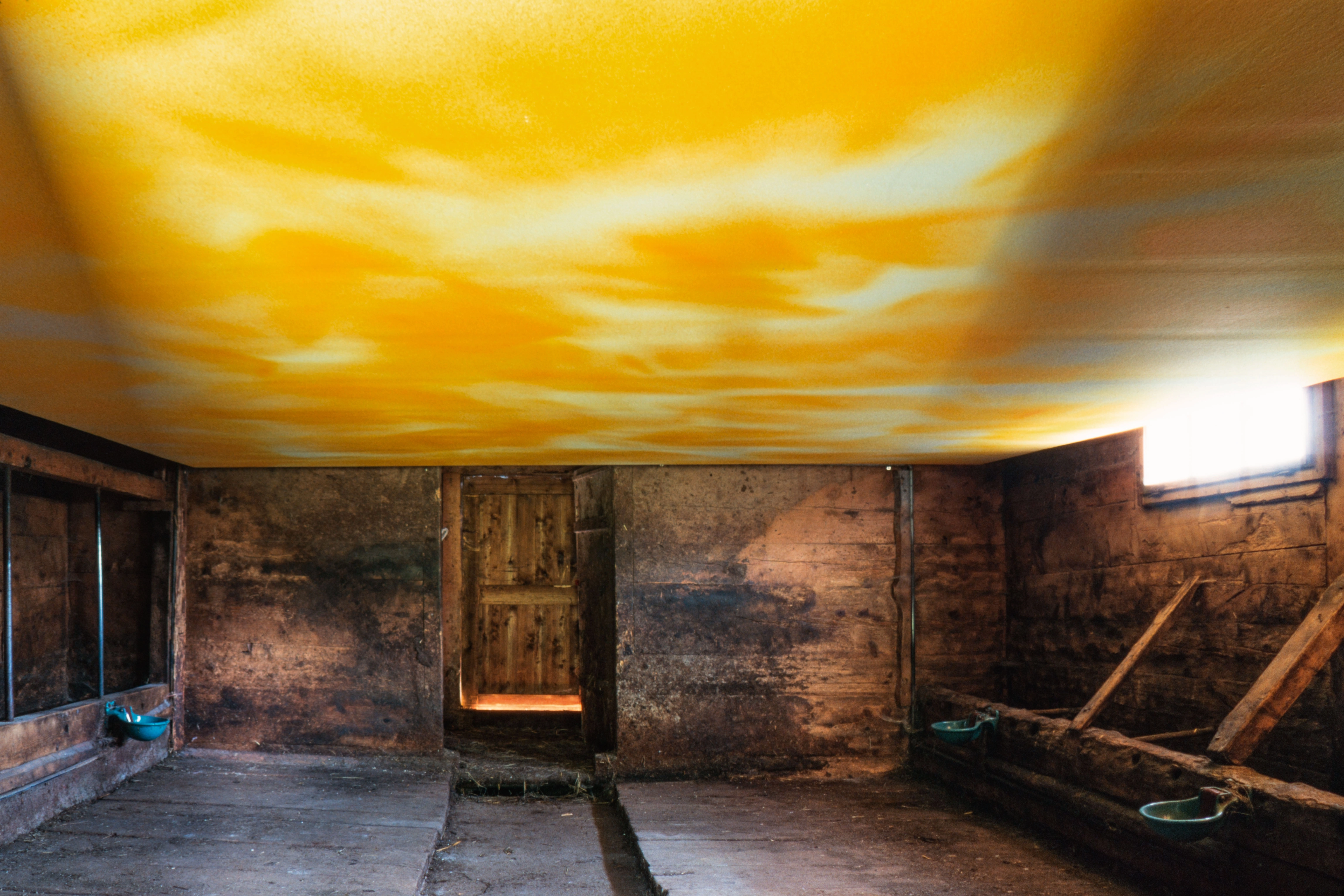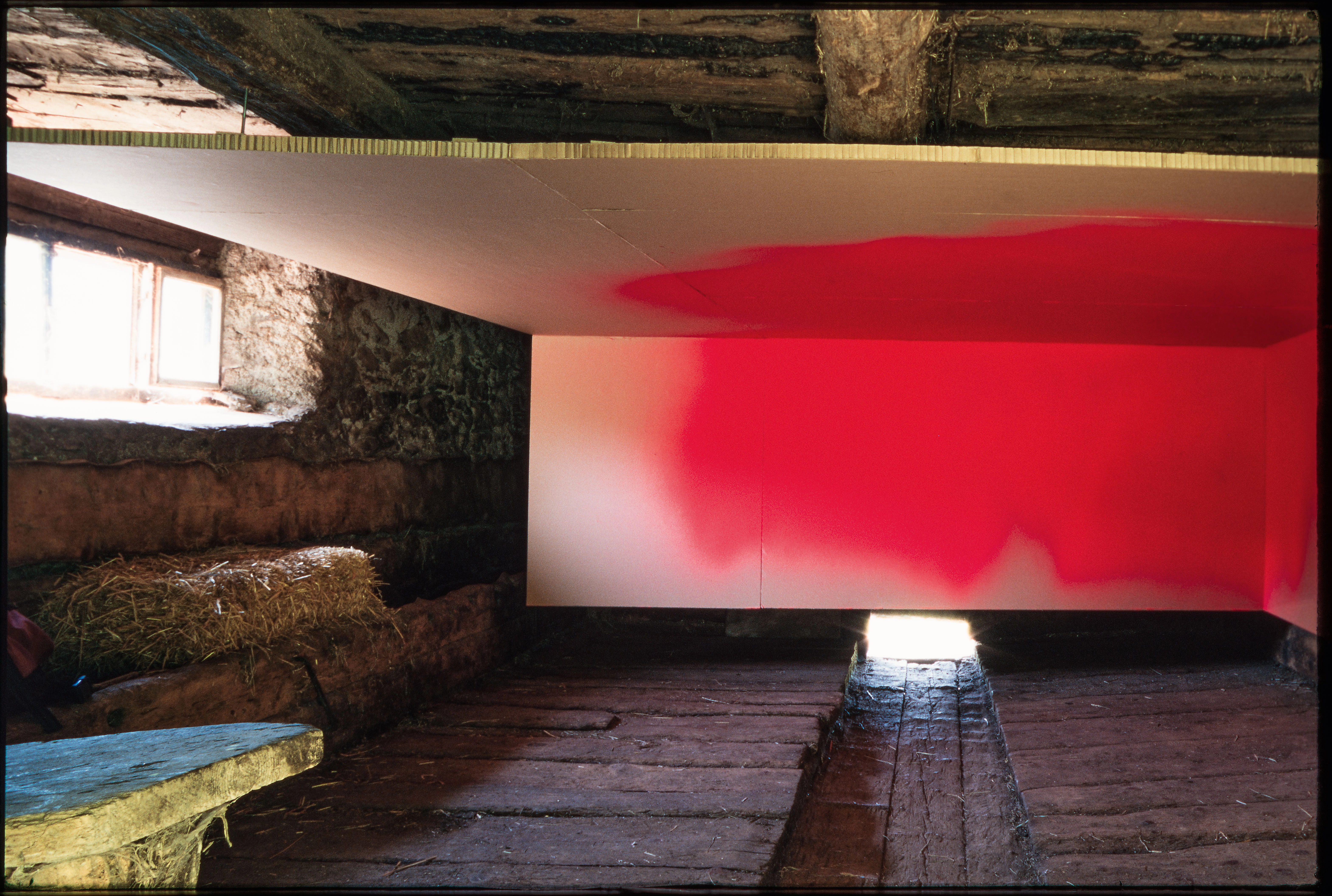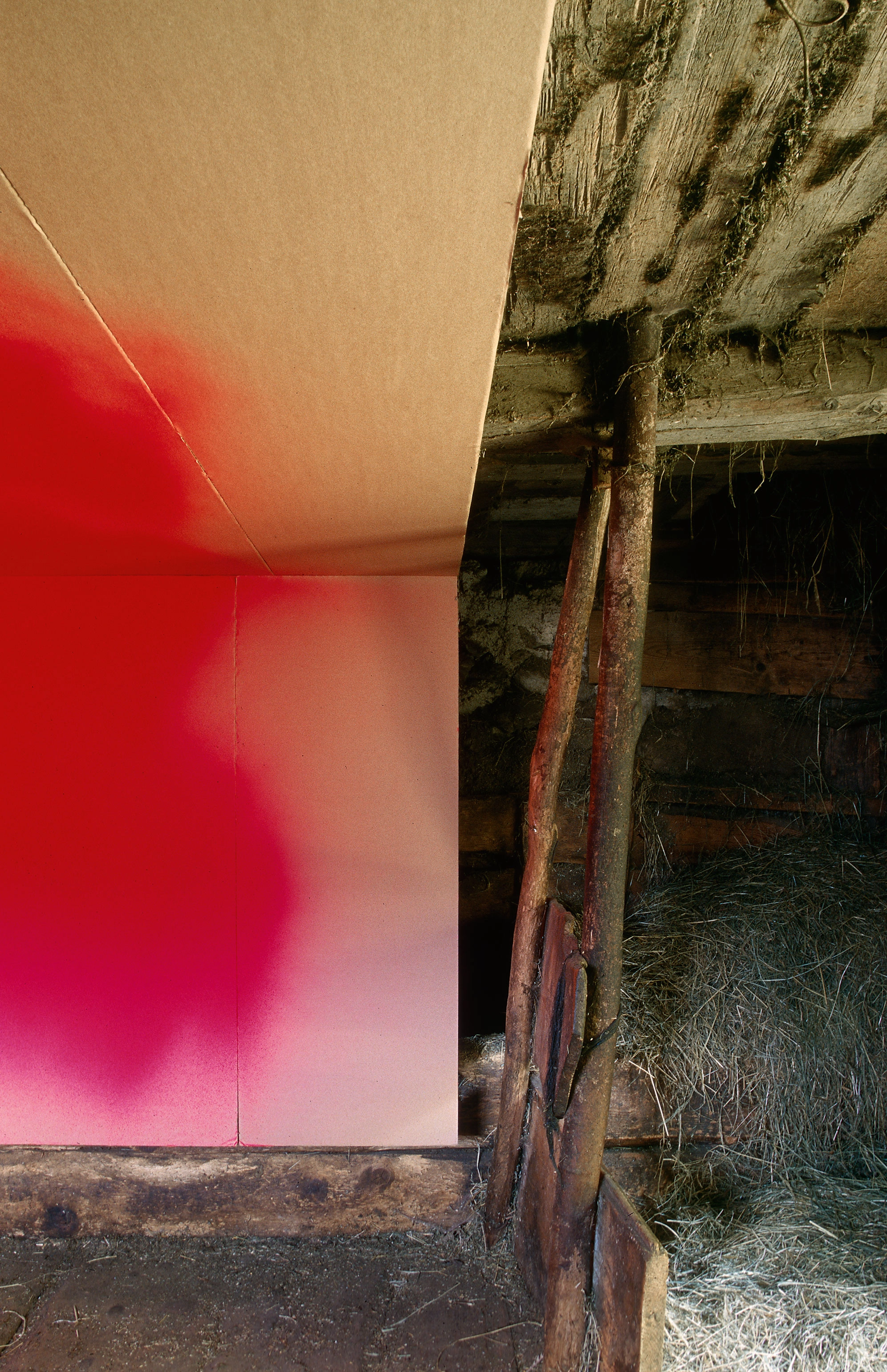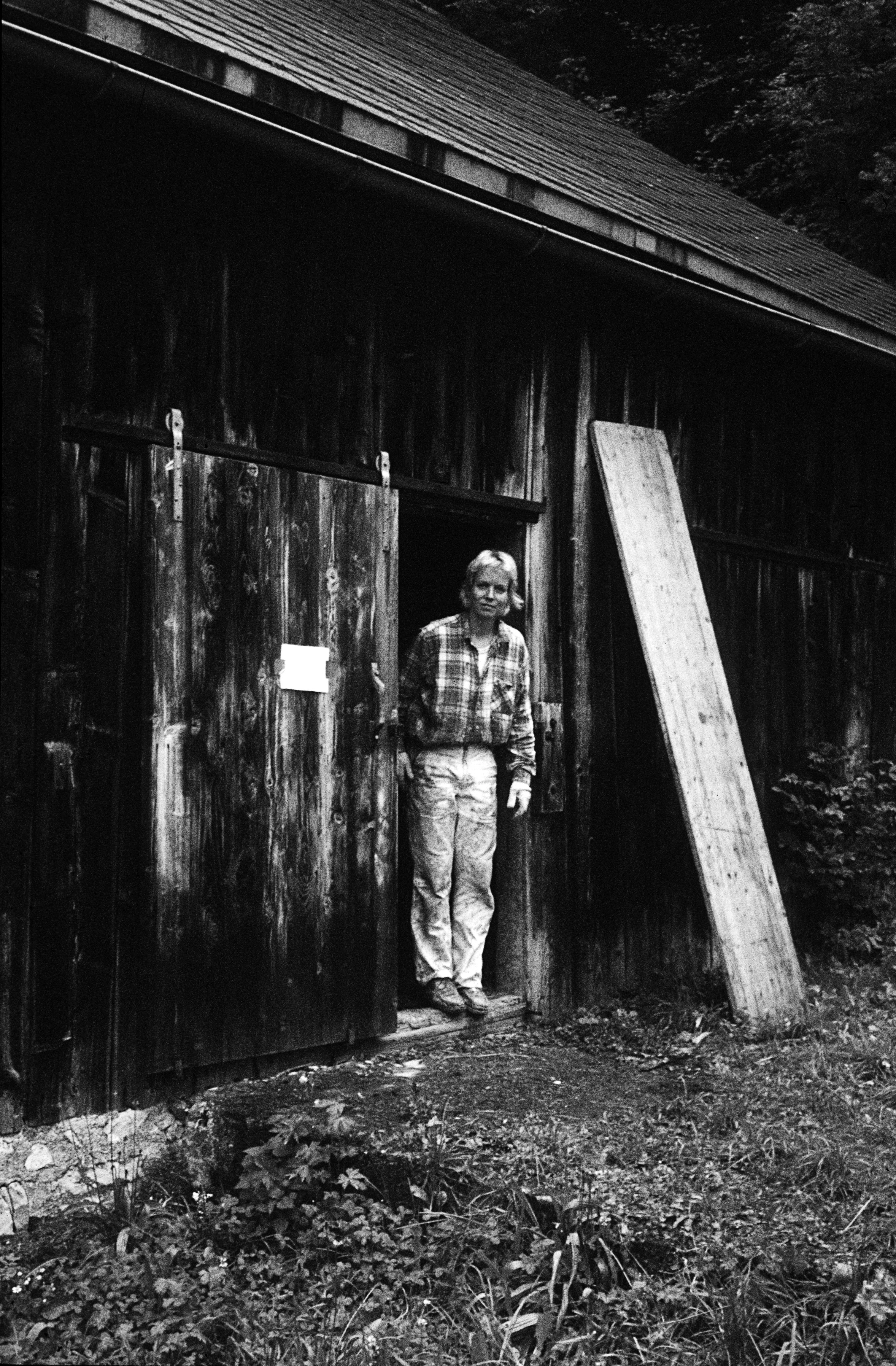Katharina Grosse’s painting reveals a predilection for rapid painterly action in response to an on-site situation and her own inner drives. Her early work was informed by the contrast between formal composition and its explicitly unrestrained execution. Crucial to that approach was brushwork using broad paintbrushes. In the summer of 1998, Grosse sprayed green acrylic paint directly onto the walls and ceiling of the corner of a room in the Kunsthalle Bern without doing any preparatory sketching at all. It was to be the first of untold spray-painted works of limited duration, created in galleries, museums, and public spaces.
We met for the first time between two trains in the spring of 1998, when Grosse was passing through Basel. The decision to invite her to work out an idea for the project space at Kunsthalle Bern was quickly taken. Shortly afterwards, she came to Bern to look at the space. It was clear from the first that I did not want any canvases. Everything else, however, took shape in the course of the following months. Grosse first started working on a film, and only later began developing the idea of a spray-painted piece. I went to her studio in Düsseldorf to discuss some initial experiments. She had made a small cardboard model of the space and had spray-painted a patch of dark green onto the walls and ceiling. I found myself completely captivated by the pathos of the screen splotch — as if a child had painted it with a thick felt pen. Generations of artists have tried to find answers to questions relating to the purpose of painting, the potential of painterly procedures, and the role of the artist. Had Grosse actually succeeded in re-inventing painting by rendering the painterly act as a performative process in space? Although the artist had already made substantial progress with her film, we decided to show only the spray-painted work.
In 1999, a year after Grosse had started using a spray gun, she transformed two dark stalls in Amden into sites for painting without changing or hiding their original purpose. They had never been used for exhibitions before and architecturally, they looked the same as they had when the artist first saw them during a visit to the site in winter. Grosse commissioned a local craftsman to install structures that would accentuate the light falling into the low-ceilinged rooms. She then spray-painted each of these in a different colour. No subject matter was referenced in the choice and use of the colours; similarly, the approach to composition and colour was deliberately open-ended. The painterly support in one stall consisted of a suspended plaster ceiling and in the other of a piece of cardboard suspended from the ceiling in a corner of the room. An orange plane extended across the entire ceiling in the former, while a red shape emerged on the segment that had been built into the latter. The buildings, the installed segments and the painting were closely related in size; all of the elements could be seen at a glance. Describing in retrospect the impression that her work made on viewers, Katharina Grosse remarked it was as if a building had met a picture of the same size. This impression was heightened by the isolated location of the barns and the sublime vastness of the surrounding mountain landscape. The shift in scale on entering the one-room buildings was indeed extreme. For a brief moment, it seemed as if the luminous painting and the solidly built barns, used by generations of farmers, belonged to one and the same fictional order.
– Roman Kurzmeyer

 Images
Images
 Info
Info




